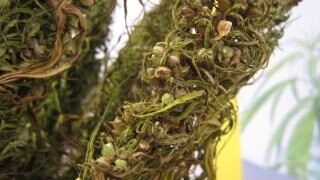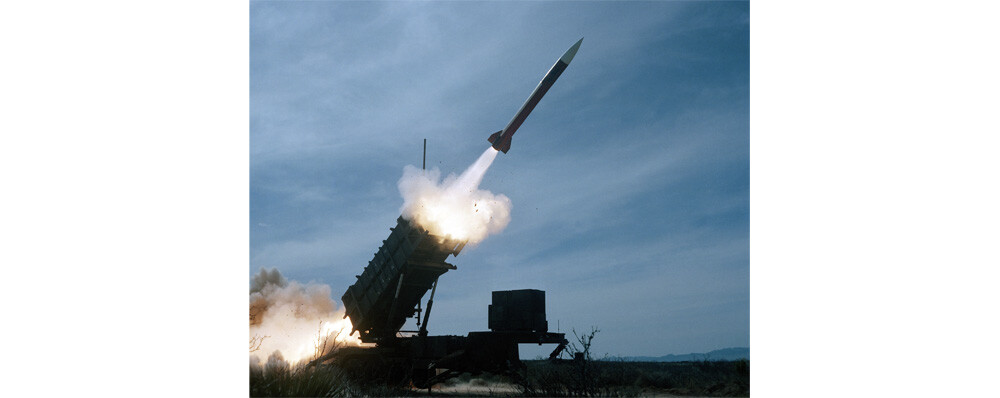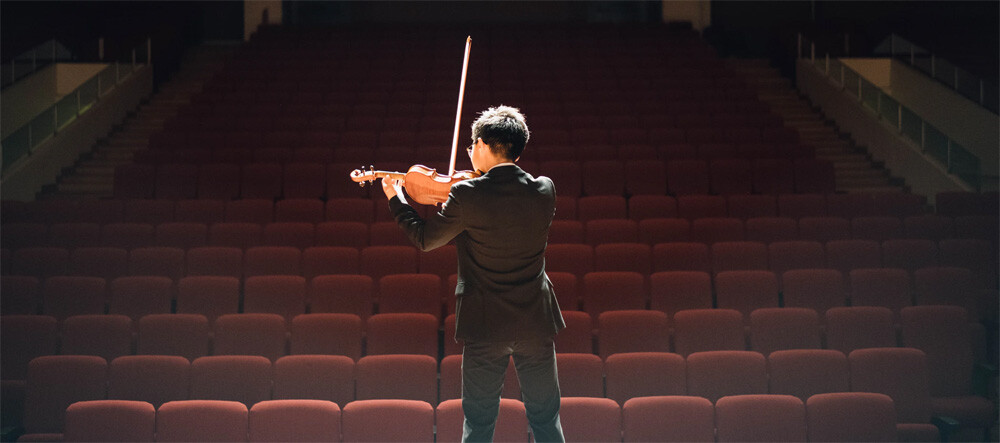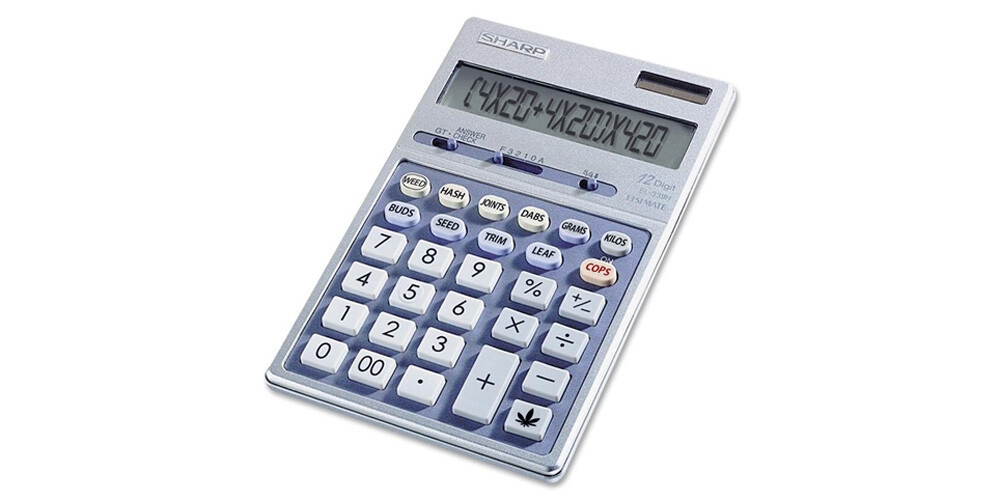Marijuana Is 67,200 Times Stronger Than It Used To Be (According To The Media)

You've heard the warnings. Today's marijuana is stronger than ever! Weed used to be mild fun, now it's mind-blowingly potent and dangerous! Could it be true?
I've been running a personal trial of cannabis potency with heavy daily sampling since 1988, and my experience is that the holy herb is pretty much the same now as it always was. But what do I know? Maybe smoking dozens of phat joints a day for 12,000 days in a row has addled my mind to the point that I can't tell how much danker the ganja is now than it used to be.
I wanted to find the truth (with science!), so I analyzed 80 years of potency reports from scientists, law enforcement, politicians, and the media. I'm here to tell you that the numbers are in. Modern weed is actually 67,200 times more potent than it was in the 1930s. Damn, I just spoiled the ending. Read the article anyway?
Don't Miss
Imagine my surprise; it turns out I built up my tolerance so much that I never noticed how cannabis flowers had gotten so potent that people can probably get a contact high just by looking at them. It's science! Read on and be amazed ...
1990s-2019: Tripling In THC-Ness
Way back in 2019, an era now known as the Before Times, Surgeon General Dr. Jerome Adams explained that cannabis had become three times stronger than it was in the '90s.
"This ain't your mother's marijuana. Not enough people know that today's marijuana is far more potent than in days' past." – Dr. Adams

If our weed is three times stronger now, then the stuff they smoked in the '90s must have been pretty soft? Let's see what they were saying about pot potency at the time.
1980s-1990s: 40 Times The Firepower
Joe Biden was the sleepy Senate Judiciary Committee chair in 1996. Here's what he had to say about the growing power of cannabis flowers back then. "It's like comparing buckshot in a shotgun shell to a laser-guided missile."
Boom. One toke of nineties weed could take out a neighborhood. I'm not sure what Biden's been up to since then, haven't heard much from the guy.

We need solid numbers here, not vague military metaphors from some forgotten politician. What else do we got?
"Marijuana is 40 times more potent today than 10, 15, 20 years ago." – US Drug Czar Lee Brown, 1995
That's better. Real science demands real figures. 40 times more potent? I guess the stuff they were smoking back when RoboCop got started executing evil drug dealers must have been decaf.
So, what did they say about cannabis potency during the '80s?
1970s-1980s: Sevenfold Surge In Stonedness
Well, the '80s is when Reagan was informing his fellow Americans that cannabis was "probably the most dangerous drug in the United States." Nothing like telling kids that if they can handle a joint or two of the devil's weed, then meth and heroin should be a breeze.
But this isn't precise. Numbers, we need numbers.
"The potency of marijuana has increased sevenfold in the past eleven years. Smoking one marijuana cigarette now is equivalent to smoking seven cigarettes nine or ten years ago." – National Institute of Drug Abuse, 1986
Holy bong blasts, Budman! '80s weed was seven times more potent than it was in the '70s. If we do the math, this means our modern herb is 840 times stronger than the stuff Cheech and Chong were blazing in Up In Smoke. 840 is a double 420; talk about flower power.

Up in Smoke
1960s-1970s: 20 Times The Toketasticness
Surely this means that in 1975 they were smoking some extremely wimpy weed? Nope! As we know from the documentary series That '70s Show, schoolkids at the time were using wacky tobacky way stronger than what their stoner moms ever puffed on. Here's what the media was saying at the time:
"The grass kids are buying in the schoolyard parking lot for $10 a 'lid' is not what it used to be. The potency of the Jamaican Colombian variety is 15 to 20x stronger than our 1960s variety." – Paul Harvey, national columnist, 1975
What the hemp? 20 times stronger? So then the stuff they toked in the '60s must have been weaker than a bag of oregano, right?
Why would anyone even bother to inhale the fumes of smoldering cannabis buds when there were only teeny-tiny trace levels of THC? How did people enjoy the lyrics in Beatles songs before there was marijuana strong enough to appreciate them?

United Artists
1930s-1960s: Quadriplication Of Cannabosity
"A more potent strain of marijuana - reportedly capable of addicting those who use it - is now being smuggled into the United States." – Associated Press story, 1967
Way back in 1967, they were warning about the new marijuana that was dangerously potent compared to the stuff they used to smoke in the good old days. This was the first time the "experts" started saying legalization shouldn't happen because of a new, more potent cannabis variety.
The Associated Press didn't give a number for the increase in strength, so for our mathemagical purposes, we'll be conservative and assume that the new, "addictive" marijuana of the '60s was only twice as potent as the non-addictive, mild stuff from the '50s.

AMC
Well, the cannabis from the '40s must just have been some kind of placebo then? Not according to Narcotics Bureau agent John Tully, who said the newly developed varieties of marijuana in 1947 were stronger than ever:
"The Mexican crop of stronger, newly developed marijuana weeds... is believed to relax muscular and mental tension, and permit musicians to play faster." – St. Louis Globe-Democrat, 1947

Agent Tully goes on to say that this new, more potent pot was being peddled to "musicians and youthful juke-joint hangers on ... by the Al Capone of the St Louis tea business." He explains that "corrupted teen-agers" could be found "swaying and chanting to the music of 'jive' recordings."
Again, they don't give an exact multiplier, so we'll conservatively assume the "stronger, newly developed marijuana weeds" of 1947 were only twice as potent as the broke old stuff from the '30s.
Get Out The Cannacalculator
Okay, let me spark up a joint and do the cannaculations; I only know mathijuana, so bear with me here. Two doublings of dankitude equals a quadrupling in cannabosity, times twentyfold toketasticness makes four twenties. That potiplied by a sevenfold surge in stonedness times 40 shotgun blasts with a further tripling in THCness makes a sum of four twenties plus four twenties times 420. Wow, nice how that worked out.

In layman's terms, that's 2 x 2 x 20 x 7 x 40 x 3 ... thus, it's clear as a cloud of sweet sativa smoke that one modern cannabis cigarette is the equivalent of precisely 67,200 cannabis cigarettes from the 1930s!
I know, I shouldn't have told you the total back at the beginning; I got too excited and ruined the big reveal!
Still, that 1930s stuff must have been like a bucket of moldy hempseed compared to our modern mind-melting megajuana. Seems weird that Jamaicans would start a whole religion in the 1930s based on how much they loved smoking ganja, considering how undank their nugs must have been.
I wonder what the media was saying about marijuana in the 1930s?

G&H Productions
That wackass pseudo-pot from the 1930s was some powerful stuff – "a deadly scourge that drags our children into quagmires of degradation."
After banning the kind buds for almost a century, what have we accomplished? Now weed is 67,200 times more potent than the insanity-inducing hell herb our great-great-grandmothers used to smoke. Scandalous.
All of this makes me wonder, what the heck were these fellow travelers toking on 2500 years ago?

Postscript: The Peculiar Problem Of Pot Potency
Now that my buzz has worn off a bit, there are a few final points here worth considering when it comes to measuring the precise potency of dried cannabis flowers.
While the lovely letters THC followed by a number and a percentage sign might seem simple and precise, the reality is that cannabinoid claims are incredibly complex and open to a great deal of interpretation. There are many reasons to question how meaningful any of these THC tests really are in the end. Well, there are six reasons actually, and I'm going to quickly explain them to you now, in list form.
I bet you didn't expect to find a surprise listicle hidden all the way down here, but hey, hey, today's your lucky day! It's my bonus gift to you for making it this far.
Varying Samples
Trying to determine a pattern from decades of test results can be deceiving. Some samples are from live plants cut down before they were ready to harvest. Sometimes early cannabis samples had been slowly degrading in a police storage locker for years before being analyzed. Some years a big seizure of particularly high or low potency cannabis could skew the average. When you take these factors into consideration, some researchers even see a decline in potency during years that others claim potency was rising.
Seeds And Sinsemilla
When cops seize a batch of bud with seeds in it, the lab doesn't take out the seeds before analysis; they grind it all up together and measure the overall THC level in the blend. This will produce a much lower potency result for the batch, even though once the user had picked out the seeds, the cannabis buds themselves might actually be high quality. Sure, seeded weed is less potent by weight, but the user experience would be the same in the end.
Unseeded "sinsemilla" marijuana only started to emerge in the early 1980s and took decades to become widespread. (To produce sinsemilla, male plants must be pulled out before they can release pollen to fertilize the female flowers. Without seeds, the female buds will produce more resin by weight.) If the cops seize an outdoor crop that has male plants, they also go into the mix.

A report from the scientists who analyze cannabis confiscated by the cops confirmed that the only reason they found an increase in average pot potency from 1995-2014 was because the DEA had been seizing fewer male plants and fewer seeded buds. "The increase in the proportionate number of sinsemilla samples has been the cause of the overall increase in potency."
Testing Methods:
Different methods of analysis can also produce different results. It turns out the "gas chromatography" method used for decades to analyze cannabinoid levels can destroy THC while heating up the sample, producing an inaccurately low result. Many labs now use liquid chromatography instead. This makes it hard to meaningfully compare results from different eras when they have been using different methods and technologies.
THC Inflation:
Modern marijuana marketers are motivated to get the highest THC test results they can, so they can charge a higher price for what is presumably a more mind-melting product. This has resulted in "THC inflation" as legal pot producers shop around for a lab that will give them the test result they want and is giving the false impression of brain-bogglingly high THC levels in some commercial cannabis flowers. Sadly, claims of inaccurate tests, fraud, corruption, and completely fake results are widespread in the cannabis testing industry, rendering any claims about modern THC trends completely meaningless.
Other Cannabinoids
THC level doesn't actually equate to potency, as it's just one of dozens of cannabinoids with complex interactions and psychoactive effects. Blind judging and scientific studies are showing that the cannabis with the highest level of THC is not always considered the strongest or most desirable by users.
The "entourage effect" is a term used to describe how the mix and ratios of many varied cannabinoids are more important than any one in particular. There are also aromatic molecules in marijuana called terpenes which have therapeutic and additive effects with cannabinoids in ways we're still coming to understand. So just pointing to THC level doesn't really say anything definitive about the user experience.

HBO
Extracts And Edibles
Humans have been making cannabis flowers into a potent hash and oil extracts for a very long time. High Times magazine was advertising the "Isomerizer" home cannabis oil extraction kit from their first issues in the 1970s, based on extraction technology from the 1800s. Gram for gram, these concentrated cannabis products will always be substantially more potent than the buds they were made from.
Plus, as long as there have been people inhaling cannabis, there have been people eating it. Cannabis edibles are well-known to cause psychoactive effects far more intense than even the most epic bong hit. All of this means that it's always been pretty simple to produce powerfully potent pot products from "low potency" cannabis if you really want to.
By the way, even if cannabis was somehow a zillion times stronger now than it used to be, so what? That would just mean you don't need to use as much to get the same enjoyable effect.
Dana Larsen has sold more marijuana to more people than you have. He wrote a book about The History of Cannabis in Canada and another one called Hairy Pothead and the Marijuana Stone. He tweets about stoner stuff at twitter.com/DanaLarsen.
Top Image: D-Kuru/Wiki Commons
